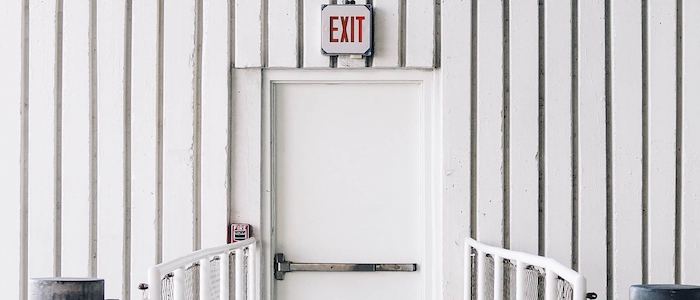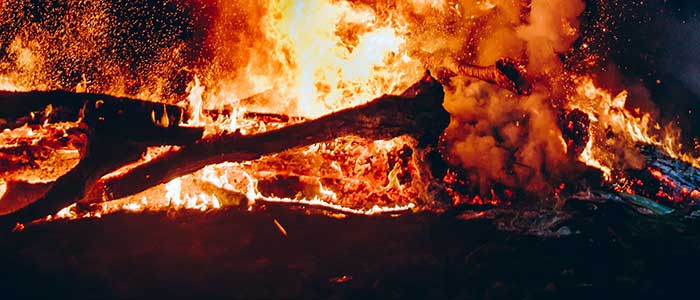Dashpivot article – how often do fire doors need to be inspected?

How often do fire doors need to be inspected?
What is the NFPA 80 standard and how does it related to how often fire doors need to be inspected?
The NFPA 80 (National Fire Door Association Publication 80) is the national US standard for fire doors and other opening protectives that regulates their installation and maintenance, and is the main standard for helping us understand how often fire doors need to be inspected.
This standard also provides the guidance and minimum requirements for inspection and testing of fire-rated doors, fire-rated windows, fire-rated proscenium openings, dampers, fabric safety curtains, protective curtain assemblies, and other types of opening protectives.
Similarly, it also offers guidance on the placements of fire detection or activation devices such as smoke detectors and fusible links.
How often should fire doors be inspected?
Annual inspections of fire doors and other opening protectives are mandated in the NFPA 80 standard. A qualified person or inspector with a degree, certification, or professional standing is the one responsible for performing these inspections using a fire door inspection checklist, should verify which ones are complying to the standards, and completing the fire door inspection report.
Building owners and managers should ensure inspections are scheduled and regularly documented for compliance. One of the most important things is a well-documented inspection to keep track of any defects detected, as NFPA 80 requires that any defects found should be repaired or replaced immediately.
Regular inspections after every installation and maintenance are also required in NFPA 80 to ensure that opening protectives are in proper working condition and in compliance to the standard. The cadence is dependent on the type of protective, its usage, and location. High traffic touchpoints with a constant flow of people should be inspected more frequently.
What are the NFPA 80 fire door inspection requirements?
Now that we know how often fire doors need to be inspected from a legal perspective (inspections should be done annually), regular inspections after installation and maintenance should be performed too. A fire door inspection is a detailed examination of fire door components to ensure that they are in proper working condition and will perform as expected in the event of a fire.
The inspection aims to identify any impairments that might prevent the door from providing a reliable barrier against the spread of fire and smoke. In summary, a fire door is checked based on the following:
-
Visual inspection on labels and clearances
-
Fire-resistant ability
-
Fitted with a self-closing device, hold-open device, and latching hardware
-
Integrity of smoke and fire seals
-
Integrity of door and frame
Using proper inspection documentation to drive regular and correct fire door inspections
A fire door inspection checklist contains a list of items that inspectors run through during an inspection to assess whether they check out the requirements. It contains a series of points that are checked every after installation, maintenance, or repair on a fire door, separate from the annual inspection.
They do this in every single fire door that needs to be inspected and it should be done thoroughly and correctly as they would need it for the fire door inspection report. Proper record-keeping of the fire door inspection checklist is crucial for compliance and ongoing safety assurance.

Use this free digital fire door inspection form as often as you like
Now we know how often we need to inspect fire doors, what do we need to inspect every time?
It is essential that a standard format for the fire door inspection checklist is observed and strictly complies with standards being followed, such as the NFPA 80.
Based on the NFPA 80 fire door inspection requirements, a checklist may contain a breakdown of individual requirements under different categories such as, for example:
-
Visual inspection on labels and clearances:
-
The fire door is labeled legibly and visibly by an authorised labeling service
-
The door clearance is within the allowable limits according to the standard
-
The signage on the door is visible and attached using adhesives
-
The fire door is free of obstruction
-
-
Fire-resistant ability
-
The fire door has a certification label indicating as proof that the door has been tested for their fire resistance level
-
-
Fitted with a self-closing device, hold-open device, and latching hardware
-
The self-closing device is operational
-
The hold-open device is operational
-
The latching hardware is operational
-
-
Integrity of smoke and fire seals
-
Seals are intact and present
-
Seals smoothly move in their sleeves
-
The seals are rated for fire
-
The seals match the door’s fire rating
-
-
Integrity of door and frame
-
There are no cracks, dents, holes, and other damages
-
There are at least three hinges attached on the fire door
-
All hardware are present, functional, and operational
-
The checklist may differ in content based from a fire door’s overall design, usage, and location. They can have specific requirements and it’s essential to specify the varying requirements in your checklist.
Ultimately, a fire door inspection checklist adheres to the standards being followed and to the type of fire door being used. There should be regular inspections on top of the mandatory annual fire door inspection to ensure the safety of the occupants in the building.
What is a fire door inspection report, and how often do they need to be completed?
After the inspection, a report is typically generated that outlines the summary from the inspection checklist. A fire door inspection report is a comprehensive formal report that outlines which doors are compliant outlined in the NFPA 80 standard and which doors are not.
It includes the identification details of the fire doors in the building inspection such as the location, type of door, material, fire rating, and door configuration. Rather than a fire door inspection checklist, a fire door inspection report contains the following (and additional) requirements:
-
Visual inspection Results
-
Damages
-
Notes on modifications or alterations
-
Details measurements
-
Verification of no obstructions
-
-
Operational or Functional Test Results
-
Results from operational checks
-
Fire protection features verification
-
-
Compliance Check
-
Defects Check
-
List of all defects and damages identified
-
Severity and impact of defect on fire safety
-
-
Comments, Recommended Actions, Follow-up Actions
Read more on your fire door inspection requirements here.
How to Standardise Your Digital Fire Door Inspections?
Make it easy for your team to record fire door inspections by using a digital fire door inspection template.
Pre-built with all the fields needed to conduct your fire door inspections, you can customise it with the drag and drop form builder for any project specific needs you have.
Digital signoff with manual and contactless signatures make it easier to stay compliant and build a bulletproof audit trail.
You can also better stay on top of your fire door inspections with a dedicated fire door inspection app., which makes asking the question of how often do fire doors need to be inspected not as much of a chore, because the task itself becomes more simple and more well managed.
Use lists to keep track of fire door inspection statuses, and get automatic notifications when fire doors are overdue for inspections, or need them upcoming.
Create automated workflows to plan, record and sign off on fire door inspections, so they're not missed, and they always get signoff approval.

Q Mark Fire Door Installation template
Achieve Q Mark certification by using this digital Q Mark Fire Door Installation template.

Fire Drill Report template
This fire drill report template makes your fire drill reporting more complete and more actionable.

Fire Evacuation Plan template
Use this fire evacuation plan template to create comprehensive site or project specific fire evacuation plans.


